Development of the Jellyfish Aglantha
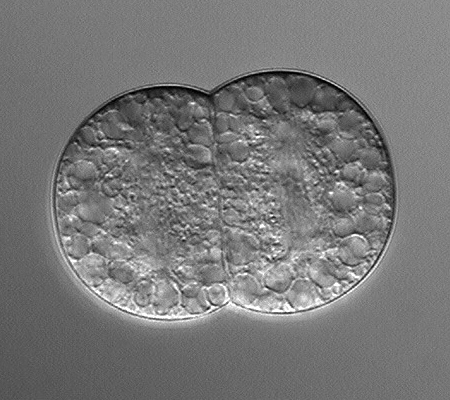
The eggs of the jellyfish Aglantha are unusual among hydrozoan eggs in that they contain large, irregularly-sized yolk globules. Nevertheless they are quite clear; the yolk just gives them a sort of otherworldly moonscape-ish look. It also helps one see the mitotic apparatus during early cleavages, since the dense microtubules exclude the yolk.
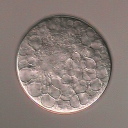
|

|
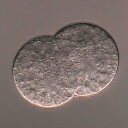
|
As in other hydrozoan embryos, Aglantha blastomeres cleave unilaterally; the cleavage furrow initiates on the outer surface of each blastomere and no furrow ever forms on the inner surface. The three images below are the same embryo at different points in second cleavage.

|
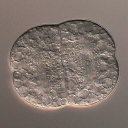
|
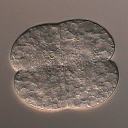
|
Unlike many other hydrozoan embryos, however, Aglantha embryos tend to remain rather tightly compacted. As in the images above, blastomeres don't round up much before cleaving, and after cleavage they zipper up quite tightly; the first two images below have just finished second cleavage (the first is the same embryo as in the row above), and the third is a little older.
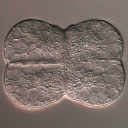
|
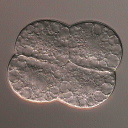
|
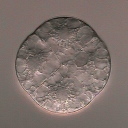
|
As far as I can tell there is never a blastocoel; the equivalent of the blastula is a solid ball of cells. The yolk is progressively centralized, as shown in the two images below. Surface blastomeres develop a layer 5-10 microns thick of clear cytoplasm, and eventually some division must segregate this clear layer from the yolk. According to Freeman's description the ectoderm covers the yolky cells by epiboly.
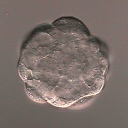
|
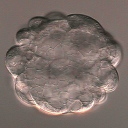
|
The Aglantha planula, shown on the left in the row below, consists of a sheet of superficial cells devoid of yolk and a solid internal presumably cell mass containing the yolk globules. The planula does not settle, but rather proceeds to develop into an actinula-like larva with a manubrium and four tentacles; the second and third images show the same embryo with either the manubrium or the tentacle primordium in focus.
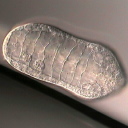
|
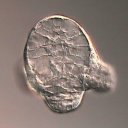
|
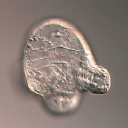
|
The actinula is heavily armed with nematocysts. These higher-power images also reveal how the tentacles include a strand of the yolky endoderm as well as ectoderm. These larvae begin to feed and develop directly into a medusa; Aglantha thus has no polyp stage.
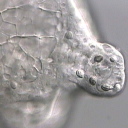
|
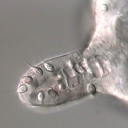
|
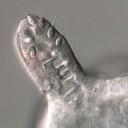
|